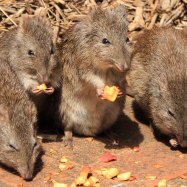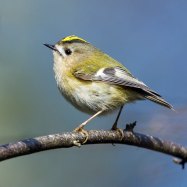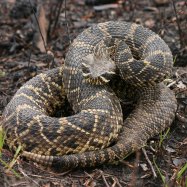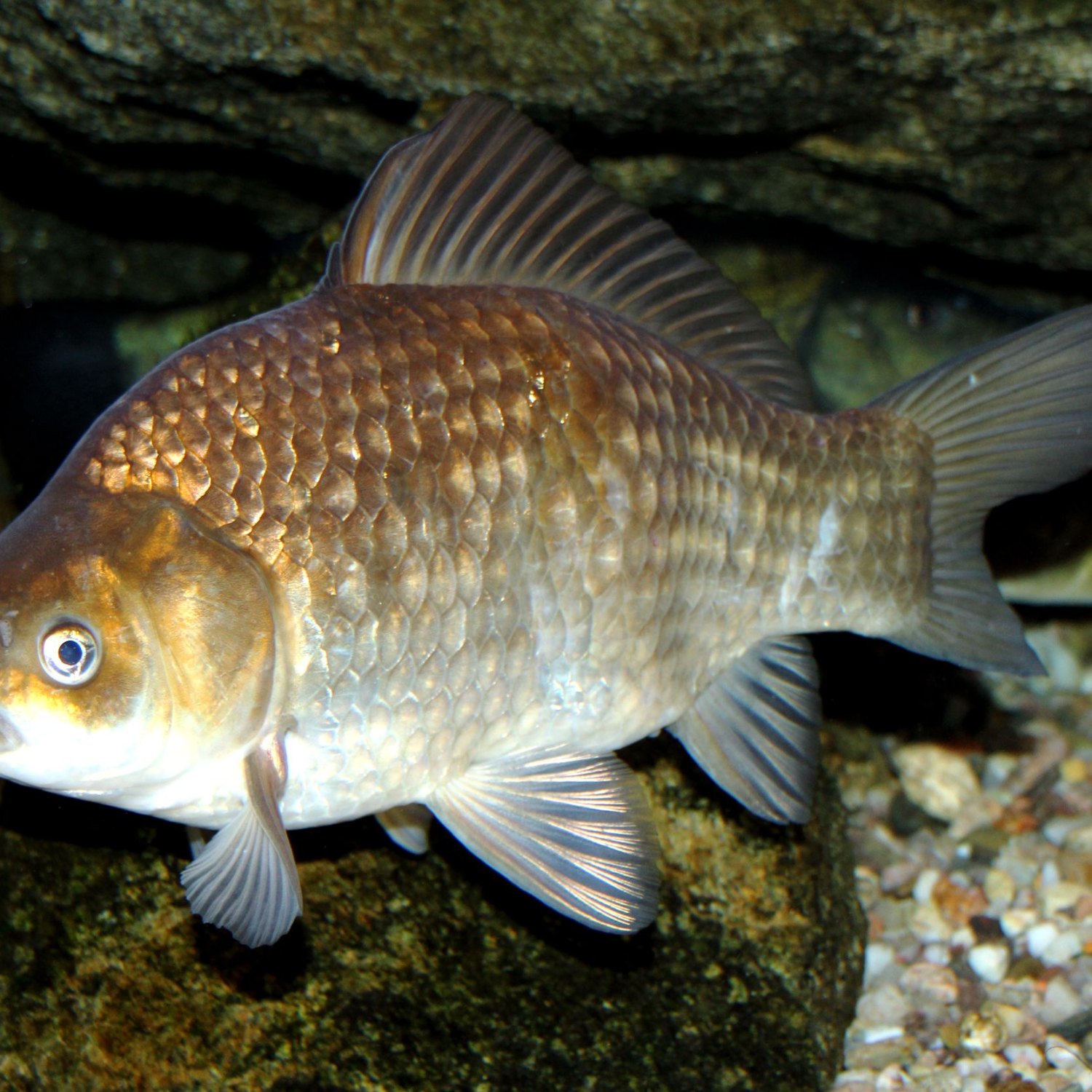
Crucian Carp
Up to 50 cm
The Crucian Carp, a member of the Cyprinidae family, is a popular fish found in ponds, lakes, and slow-moving rivers. Growing up to 50 cm in length, it has an elongated and laterally compressed body shape. With its unique appearance and ability to adapt to various habitats, it's no wonder this fish is highly sought after by anglers and fish enthusiasts alike. #cruciancarp #cyprinidae #freshwaterfish
Animal Details Summary:
Common Name: Crucian Carp
Kingdom: Animalia
Habitat: Freshwater
The Fascinating World of Crucian Carp: The Golden Fish of Europe and Asia
Imagine walking down a peaceful trail along a pond, when suddenly, the water ripples and you catch a glimmer of gold. You stop in your tracks and peer into the water, only to see a school of beautiful, golden fish swimming gracefully. These are crucian carp, a species that has captivated humans for centuries with their striking appearance and behavior.Crucian carp, scientifically known as Carassius carassius, is a freshwater fish belonging to the kingdom Animalia and phylum Chordata Crucian Carp. They fall under the class Actinopterygii, also known as ray-finned fishes, and the order Cypriniformes, which includes other popular fish like goldfish and minnows. They are part of the Cyprinidae family, commonly referred to as the carp family.
This species of fish is native to Europe and Asia, although their country of origin is still unknown. They can be found in various bodies of freshwater, such as ponds, lakes, and slow-moving rivers. Their golden-brown to olive-green coloration, elongated and laterally compressed body shape, and omnivorous feeding method make them easily identifiable.
But what makes these fish truly fascinating is their behavior and adaptability. Despite their unassuming appearance, crucian carp have distinct characteristics that set them apart from other fish species. In this article, we'll dive into the world of crucian carp and uncover the secrets of this impressive species.
The Secretive Life of Crucian Carp
As a freshwater fish, crucian carp have adapted to living in ponds, lakes, and rivers, where they can find freshwater plants and small invertebrates to feed on Common Loon. They often prefer slow-moving or stagnant water bodies, where they can thrive in lower oxygen levels compared to other fish species. This ability to live in low-oxygen environments is known as facultative anaerobiosis, wherein they can produce energy without oxygen, allowing them to survive in harsh conditions.Crucian carp are also known for their resilience and longevity. Being able to survive in low-oxygen environments makes them resilient to changes in their habitat. They can even survive in ponds that freeze over during the winter. They do this by burying themselves in the mud at the bottom of the pond, where they can survive for months until the water thaws again.
In addition to their ability to survive in harsh conditions, crucian carp are also known for their adaptability. They have the remarkable ability to change their physiology and behavior based on their environment. This phenomenon is known as phenotypic plasticity, where an organism can adapt to changes in their habitat without evolving genetically. Crucian carp can adjust their feeding, growth rate, and even reproductive behavior in response to changes in their environment.
One of the most noteworthy behaviors of crucian carp is their ability to slow down their metabolism during cold winter months. As the water temperature drops, the metabolism of this cold-blooded fish decreases, reducing their need for food. As a result, they can survive on very little food or even no food at all, allowing them to conserve energy. This adaptation is especially remarkable during long, harsh winters when food is scarce.
A Feast for the Eyes: The Striking Appearance of Crucian Carp
Crucian carp may not be the most exotic-looking fish, but their golden-brown to olive-green coloration and elongated, laterally compressed body shape are still a sight to behold. As with most fish species, their coloration plays a role in attracting mates and camouflaging with their surroundings. Their golden color allows them to blend in with the muddy and murky bottoms of ponds and rivers, making them harder to spot by predators.But what sets crucian carp apart from other fish is their shape. Their elongated, laterally compressed body is perfectly designed for swimming gracefully in the water. This body shape provides them with better maneuverability, allowing them to navigate through tight vegetation and escape predators.
Despite their common golden-brown coloration, crucian carp can have variations in their color, depending on their habitat. For instance, crucian carp found in clear, well-oxygenated water may have a more vibrant golden coloration, while those living in murky, oxygen-deprived water may have a darker coloration.
Feeding Habits of the Omnivorous Crucian Carp
Crucian carp are omnivorous, which means they eat both plants and animals. However, their diet may change depending on their habitat and the availability of food. In the wild, they usually feed on invertebrates like insects, worms, and snails, as well as aquatic plants and algae. Their ability to adapt to their environment and switch between diets allows them to survive in various habitats.In captivity, crucian carp can also be fed with commercial fish food, as long as it is appropriate for their species. However, it's important to note that these fish are prone to overeating, so it's essential to regulate their food intake and not overfeed them. Excessive feeding can lead to obesity and various health issues, so it's crucial to provide them with a balanced diet and monitor their feeding habits.
A Flourishing Species: Geographical Distribution of Crucian Carp
Crucian carp are widespread and can be found in various countries across Europe and Asia. They are commonly found in countries like United Kingdom, Germany, France, Poland, Russia, Korea, China, and Japan. They have also been introduced to other countries, mainly for aquaculture and sport fishing purposes.However, in some areas where they have been introduced, they have become an invasive species, threatening native fish populations. This is because crucian carp are prolific breeders and can lay a significant number of eggs, increasing their population rapidly. As a result, they compete with native fish for food and habitat, disrupting the natural balance of the ecosystem.
Conservation Efforts for Crucian Carp
Although crucian carp are widespread and abundant, they are still considered a vulnerable species. Their habitats, like ponds and slow-moving rivers, are being lost due to urbanization and agricultural practices. These changes in their environment can have a significant impact on their population.Several conservation efforts have been put in place to protect and preserve crucian carp. In countries like the United Kingdom, there are organizations dedicated to conserving this species by reintroducing them to suitable habitats and monitoring their populations. These efforts also include educating the public on the importance of preserving these fish and their habitats.
In addition, there are regulations in place to control fishing of this species, especially during their breeding season. This is to ensure that their population is not significantly affected and to allow them to reproduce and maintain their numbers.
In Conclusion
Crucian carp may not be one of the most glamorous fish species, but their adaptability, behavior, and striking appearance make them truly fascinating. From their ability to survive in low-oxygen environments to their unique body shape and feeding habits, they have captured the attention of humans for centuries.As we continue to learn more about this species, it's crucial to appreciate their role in the ecosystem and understand the need to conserve and protect them. As stewards of the environment, it's our responsibility to ensure that these beautiful fish continue to thrive in their natural habitats. So the next time you come across a golden glimmer in a pond, take a moment to appreciate the incredible species that is the crucian carp.

Crucian Carp
Animal Details Crucian Carp - Scientific Name: Carassius carassius
- Category: Animals C
- Scientific Name: Carassius carassius
- Common Name: Crucian Carp
- Kingdom: Animalia
- Phylum: Chordata
- Class: Actinopterygii
- Order: Cypriniformes
- Family: Cyprinidae
- Habitat: Freshwater
- Feeding Method: Omnivorous
- Geographical Distribution: Europe and Asia
- Country of Origin: Unknown
- Location: Ponds, lakes, and slow-moving rivers
- Animal Coloration: Golden-brown to olive-green
- Body Shape: Elongated and laterally compressed
- Length: Up to 50 cm
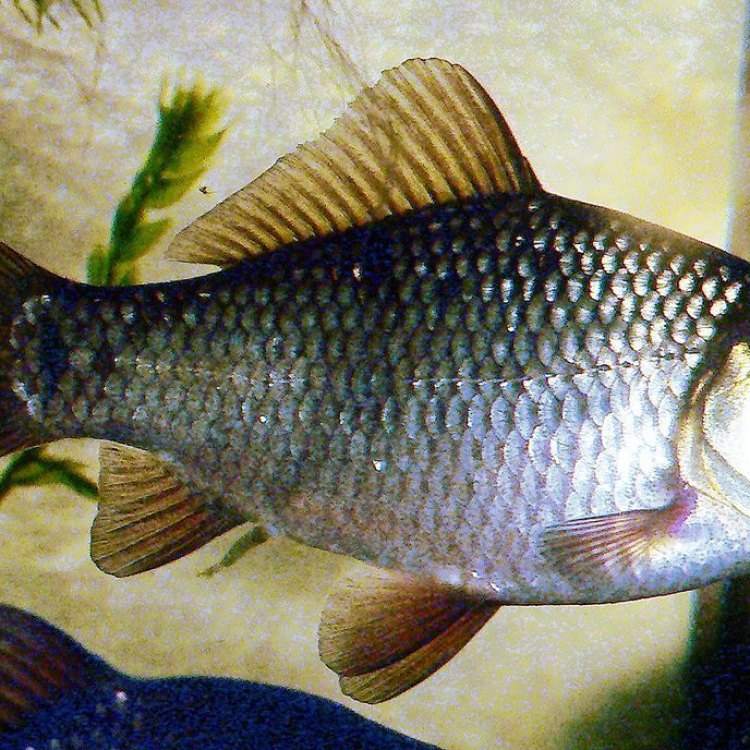
Crucian Carp
- Adult Size: 20-30 cm
- Average Lifespan: 10-15 years
- Reproduction: Sexual
- Reproductive Behavior: Broadcast spawners
- Sound or Call: None
- Migration Pattern: Non-migratory
- Social Groups: Solitary or in small groups
- Behavior: Nocturnal
- Threats: Habitat destruction, invasive species, overfishing
- Conservation Status: Least Concern
- Impact on Ecosystem: Crucian carp play an important role in maintaining the ecosystem of freshwater bodies by controlling algae growth and providing food for other fish species.
- Human Use: Fishing and aquaculture
- Distinctive Features: Deep body, slightly convex forehead, and large scales
- Interesting Facts: 1. Can survive in low-oxygen environments 2. Can tolerate a wide range of water conditions 3. Can hibernate to survive in harsh winter conditions 4. Some crucian carp exhibit a carpet-like scale pattern 5. Can hybridize with other carp species
- Predator: Birds, larger fish, and mammals
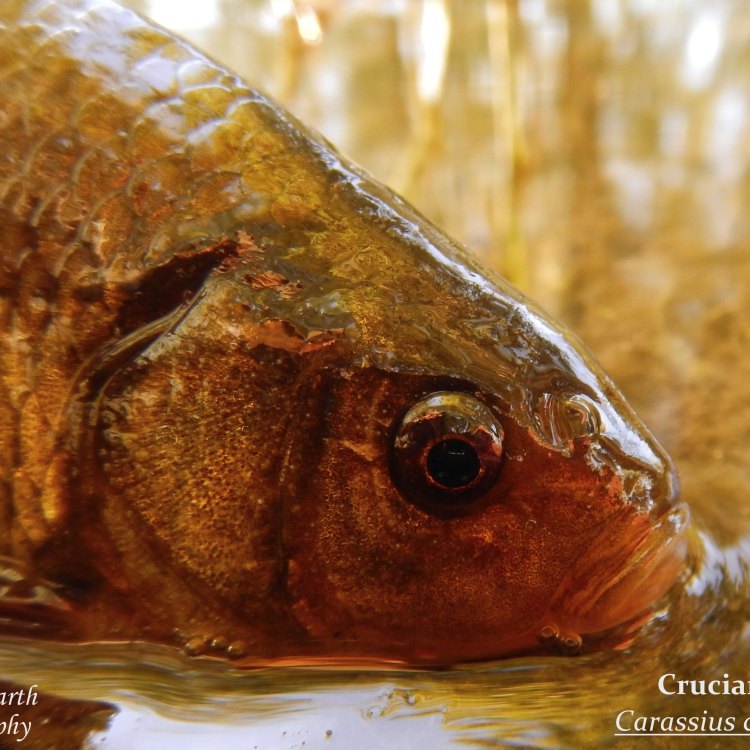
Carassius carassius
Reproduction and Behavior
Crucian carp are sexual reproducers, meaning they need a male and female to reproduce PeaceOfAnimals.Com. During the breeding season, which typically occurs in late spring and early summer, male crucian carp develop small white bumps on their gill covers, a sign of their readiness to mate. These fish are broadcast spawners, meaning that the female releases her eggs into the water and the male then fertilizes them externally.
Despite their small size, Crucian carp have a unique breeding behavior that sets them apart from other fish species. Instead of creating a nest or guarding their eggs, they release their fertilized eggs into the water in a mass, allowing nature to take its course. This method maximizes the chances of survival for the offspring, as the eggs are dispersed over a large area, making it harder for predators to find and consume them.
Migration and Social Groups
Unlike many other fish species, Crucian carp are non-migratory, meaning they do not undertake long-distance movements throughout their lifetime. They prefer to inhabit shallow and slow-moving freshwater bodies, such as ponds, lakes, and slow-moving rivers. These fish are also solitary animals, although they may form small groups during the breeding season.
Behavior and Threats
Crucian carp are primarily nocturnal, meaning they are most active at night Cockalier. This behavior is likely due to their tendency to avoid predators during the day. These fish have a complex relationship with their environment and have adapted to various conditions, making them resilient to changes.
Unfortunately, Crucian carp face numerous threats in their natural habitat. Habitat destruction, often due to pollution and human development, is a significant threat to their survival. Invasive species, such as the European catfish, also pose a threat to the Crucian carp's population as they compete for food and habitat. Overfishing is also a problem, as these fish are popular for consumption and used in aquaculture.
Conservation Status and Impact on Ecosystem
According to the International Union for Conservation of Nature (IUCN), the Crucian carp is currently listed as Least Concern on the Red List of Threatened Species. This status means that while the species' population is stable, it may still face threats in the future, making conservation efforts crucial for their long-term survival.
The Crucian carp's role in maintaining freshwater ecosystems is vital. These fish play a crucial role in controlling algae growth, as they feed on small organisms and vegetation, keeping the water clean and clear. They also serve as a food source for larger fish species, birds, and mammals, making them essential links in the food chain.
Human Use and Distinctive Features
Given their abundance and adaptability, humans have long used Crucian carp as a food source through fishing and aquaculture. These fish are also popular among hobbyists and are often kept in home aquariums due to their peaceful and hardy nature.
The Crucian carp has distinctive features that make them stand out from other fish species. Their bodies are deep and slightly convex, with a large, shiny scales covering them. They also have a noticeably large forehead, giving them a unique appearance.
Interesting Facts
While the Crucian carp may seem like an ordinary fish at first glance, they have some fascinating characteristics that make them stand out. Here are five interesting facts about Crucian carp:
1. Surviving in low-oxygen environments: Unlike most fish species, Crucian carp can survive in water with low oxygen levels. They have a unique adaptation that allows them to take in oxygen from the air through their gut, allowing them to survive in stagnant or oxygen-depleted water bodies.
2. Tolerance to a wide range of water conditions: Crucian carp can tolerate a wide range of water temperatures and conditions, making them resilient to changes in their environment.
3. Hibernation: During harsh winter conditions, some Crucian carp have the ability to hibernate to conserve energy and survive through the winter. They do this by slowing down their metabolism and consuming less energy until the conditions improve.
4. Carpet-like scale pattern: While most Crucian carp have the characteristic large and shiny scales, some have a unique carpet-like scale pattern on their bodies. This feature, known as a "mirror carp," is considered desirable by some hobbyists and is a result of breeding efforts.
5. Hybridization: Crucian carp can also hybridize with other carp species, such as the common carp and the Prussian carp. This has led to the introduction of invasive hybrids in some regions, further threatening the survival of the pure Crucian carp species.
Predators
Predation is a significant factor in the Crucian carp's life, as they are targeted by numerous species such as birds, larger fish, and mammals. These small and slow-moving fish are easy prey for many predators, making it essential for them to rely on their adaptive behaviors and reproductive strategies to survive and maintain their population.
In Conclusion
The Crucian carp may not be the most glamorous fish in the freshwater world, but their adaptive behavior, unique reproductive strategies, and important role in maintaining the ecosystem make them a fascinating species to study. While facing threats to their survival, these resilient fish continue to thrive in various conditions, making them an essential part of freshwater ecosystems. As humans continue to impact their natural habitat, it is crucial to understand the Crucian carp's value and work towards conserving their population for future generations to appreciate.
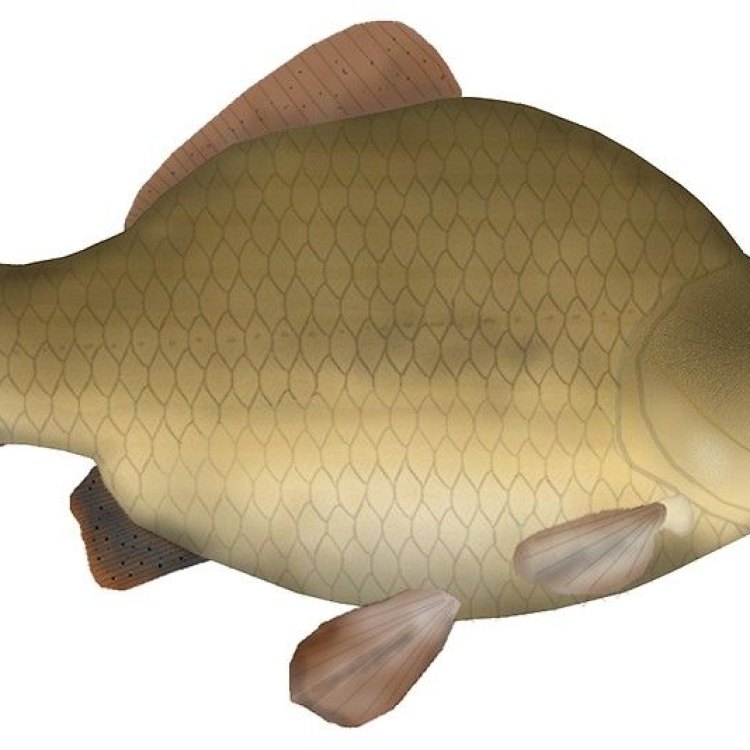
The Fascinating World of Crucian Carp: The Golden Fish of Europe and Asia
Disclaimer: The content provided is for informational purposes only. We cannot guarantee the accuracy of the information on this page 100%. All information provided here may change without prior notice.




